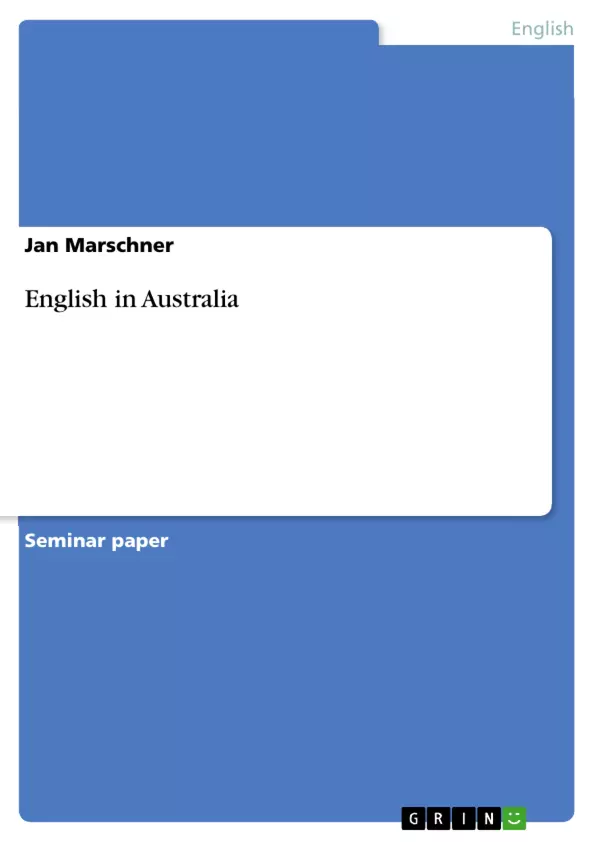This paper describes the English variety that is spoken in Australia. However, it is not a complete analysis of this variety, since this would go far beyond the scope of this paper. It is rather a summary of the most important features of present time AusE.
In the first chapter I give an outline of those aspects of Australian history that have been relevant for the formation of AusE.
The ensuing chapter describes the linguistic features of this national variety. The differences of the phonological system of AusE compared with other English varieties are described. For that purpose I compare the results of the studies of several authors concerning the pronunciation of vowels, consonants and the intonation pattern. Furthermore, what has been found out about the specifics of AusE morphology, syntax and lexicon is summed up. This chapter also deals with the question why AusE is so remarkably uniform throughout the whole country and if there is any regional variation.
The fourth chapter gives a survey of the three major dialects of AusE called Broad, General and Cultivated Australian which are rather sociolects than regional dialects.
The last chapter finally sums up the main results of the essay.
Inhaltsverzeichnis (Table of Contents)
- Introduction
- History of Australia
- Linguistic features of Australian English
- The uniformity of Australian English
- Phonology
- Vowels
- Consonants
- Intonation
- Lexicon
- Morphology
- Syntax
- Variations of Australian English – The major dialects
Zielsetzung und Themenschwerpunkte (Objectives and Key Themes)
This paper examines the linguistic features of Australian English (AusE), exploring how its unique characteristics developed and comparing it to other varieties of English. It aims to present a comprehensive overview of AusE's phonology, morphology, syntax, and lexicon, highlighting its uniformity and regional variations.
- The historical development of AusE
- The distinctive phonological features of AusE
- The uniformity of AusE across the country
- The existence and nature of regional variations in AusE
- The major dialects of AusE
Zusammenfassung der Kapitel (Chapter Summaries)
The introduction sets the stage by discussing the song "Down Under" by "Men at Work" as an example of how AusE identifies Australians. It explains the paper's scope and outlines the structure of the following chapters.
The second chapter provides a concise overview of Australian history, focusing on events relevant to the development of AusE. It covers the establishment of the penal colony, immigration patterns, and the impact of gold discoveries on Australian society.
The third chapter delves into the linguistic features of AusE, exploring its remarkable uniformity and the existence of regional variations. It examines AusE's phonology, morphology, syntax, and lexis, comparing them to Received Pronunciation (RP) and other English dialects.
Schlüsselwörter (Keywords)
This paper explores key themes such as Australian English, linguistic features, phonology, morphology, syntax, lexicon, uniformity, regional variations, major dialects, and historical development.
- Citar trabajo
- Jan Marschner (Autor), 2010, English in Australia, Múnich, GRIN Verlag, https://www.grin.com/document/204431



